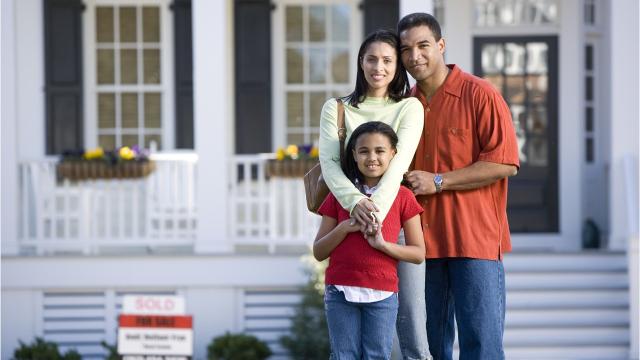Latinos are buying homes are a higher rate than the overall U.S. population, beginning to close a gap between the Hispanic and white homeownership rate that has tripled since the start of last century.

Affordability and racial inequity combined to compound a disparity throughout the past 12 decades. The typical Latin household in the U.S. earns 75.7% of the typical white household income, and the typical Latin household wealth is only 12.2% of the typical white household wealth. That means Latin households carry a far greater share (64.7% vs. 38.1%) of their wealth in their home, which made those families harder hit when home values nosedived during the Great Recession.
The homeownership rate gap sat at 25.8 percentage points just four years ago. Despite recent gains, the gap -- sitting at 24.7 percentage points in 2018 -- will take decades to close if the current pace holds.
At the start of the 20th century, the gap was roughly eight percentage points. It widened significantly during and after each World War, and again during the Great Recession. Of all the homes foreclosed upon between January 2007 and December 2015, 19.4% were in Latin communities – a particularly high number when you consider that only 9.6% of all homes in the country are in Latin neighborhoods, according to another Zillow analysis. By contrast, 81.2% of homes are in white communities, and they accounted for 66.4% of foreclosures during that time.
In 2007, near the height of the housing bubble, a home accounted for 73.1% of the typical Latin homeowner's total wealth, compared with just 46.5% for the typical white homeowner. Because their homes accounted for a much larger share of Latinos' household wealth, they had fewer outside assets to draw on when home values plummeted and they owed more than their homes were worth. Most people who went through foreclosure were not allowed back in the market for seven years, which meant many Latinos missed out on the post-recession rebound in home values.
Even today, discrimination concerns persist. About 16% of Latinos say they've been treated differently in their search for housing because of their race. And Latin home buyers are especially likely to mention discrimination as a concern when trying to qualify for a mortgage: 54% expressed concern, compared to 30% of white buyers.
Mortgage denial rates among Latinos are falling, however. They dipped to 15.5% in 2016 for conventional loans, down from 31.3% in 2008. Still, the current rate is nearly double the 8.1% denial rate for white mortgage applicants, which is likely due in part to differences in income, debt levels, credit scores and savings.
"In the face of a seemingly insurmountable disparity, the good news is that the Latin homeownership rate is climbing and, as a group, they want to own homes," said Skylar Olsen, Zillow's director of economic research. "If that trend is supported, it will help build up the Latinx middle class and create a strong driver for the whole economy. Regardless of race or ethnicity, a growing diversity of housing options is essential for the wealth building and health of all communities."